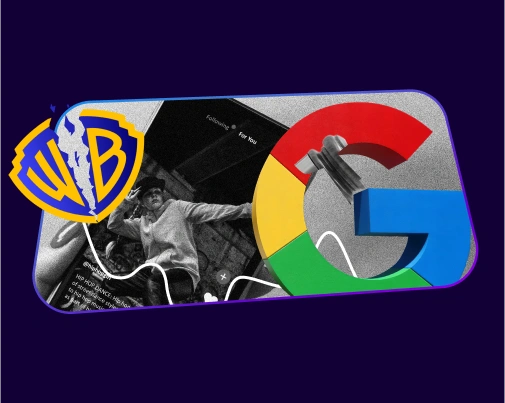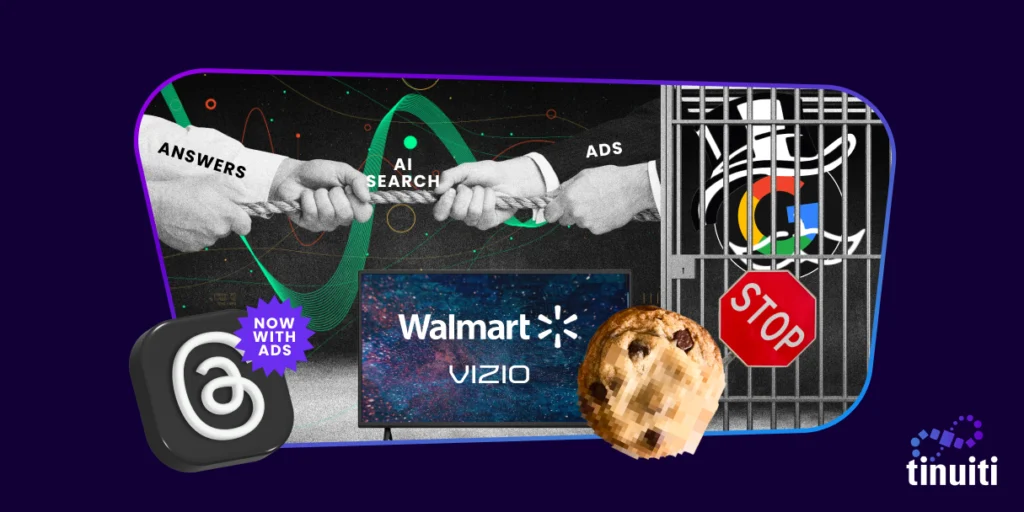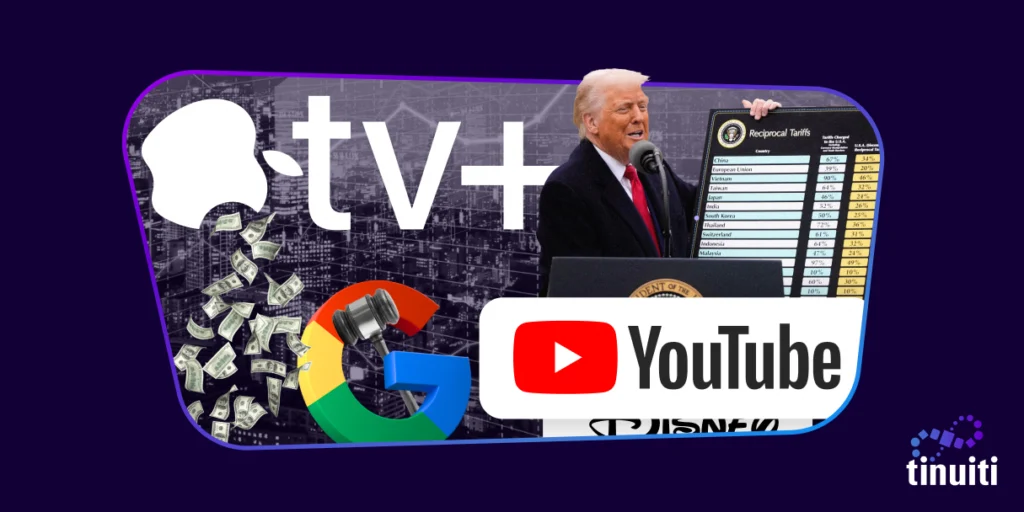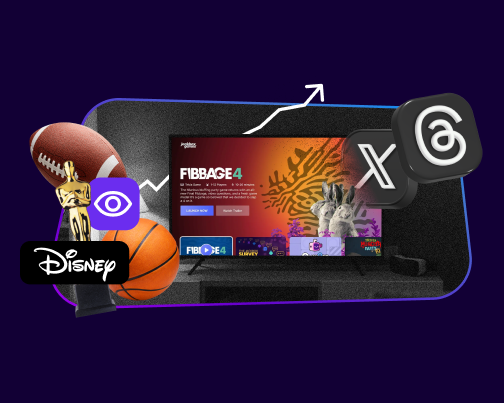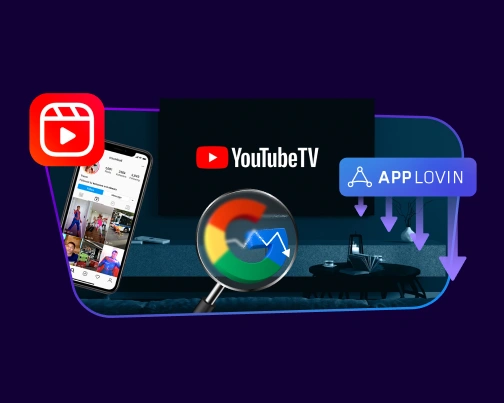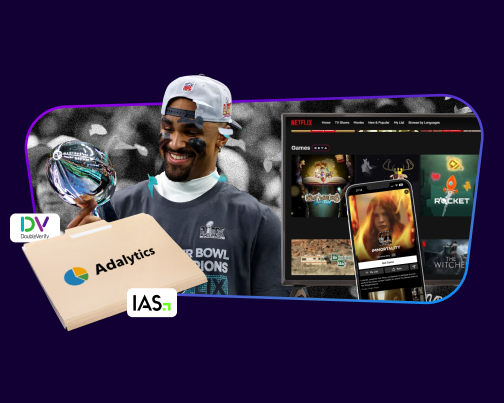Media Update: Netflix and Youtube Superiority, AI for Teens, IAB Introduces Standard Measurement Guide
Jul 25 2025

Key Highlights:
- TV & Audio: Netflix and YouTube have grown to positions of streaming superiority, but they are not unchallenged.
- Paid Social: Instagram is testing auto-scroll features for in-feed content, and a new study highlights how AI is becoming the social co-pilot for teens.
- Display & Programmatic: The IAB introduces a standard measurement guide to drive consistency in a fragmented digital out-of-home landscape.
- Search: New study into social search behaviors finds more consumers are searching on social platforms than on AI chatbots, and Alphabet’s strong Q2 earnings are largely powered by innovations in search.
- Ad Economy: While rejecting ads, OpenAI may soon embrace…. affiliates?
- Consumer Economy: Retail spending and consumer sentiment both rebounded somewhat in June, while inflation moved in the wrong direction.
TV & Audio

Another week in the books, another decline for linear TV. All major genres remain down year-over-year, especially news (though its decline is somewhat misleading, as one year ago news audiences exploded amid the Trump assassination attempt and Joe Biden’s decision to drop out of the presidential race).
Nielsen released its latest Gauge metrics for June, and the results are (unsurprisingly) impressive for streaming TV. On the whole, streaming now accounts for 46% of all time spent with TV, exceeding the 41.9% combined figure from cable and broadcast. Streaming’s 1.2% month-over-month improvement represents a new high for the channel, while the 2.3% drop for cable & broadcast leaves those channels at an all-time low. Nielsen’s “other” category (made up of vMVPD and MVPD opportunities like Sling) tied its high of 12.1%
The decline of linear is well-established and high-profile. Networks like Paramount have pointed to the dynamic to justify cancelling linear programming such as The Late Show (though other explanations have been less generous). The world replacing linear, however, is complex. The streaming landscape now has three major buckets: YouTube, representing ~30% of streaming time; Netflix, representing ~20%; and everyone else, representing the remaining half. This leaves a landscape that is both duopolistic enough to give YouTube and Netflix big advantages yet fragmented enough to keep the playing field active.
YouTube and Netflix certainly enjoy the position they hold. The two platforms combined for $93B of revenue last year, with YouTube projected to eclipse Disney as the largest media organization by revenue this year. On the surface, the two have vastly different approaches to content, with Netflix a regular contender for Oscar nominations and YouTube focused on creator-driven video. Yet there are important similarities that reflect their dominant positions. Both platforms have leaned in on premium live-sports content, and both platforms play their user data very close to the vest for targeting and attribution. That latter dynamic is especially indicative of Netflix and YouTube’s dominance, as it forces advertisers and ad tech platforms to adapt to the platforms’ needs as opposed to setting their own terms.
At the same time, that dominance is incomplete. The longer tail of streaming platforms retains significant viewer time, advertiser dollars, and industry gravity. NBCU’s Peacock may trail other streaming platforms, but its access to top-quality content hasn’t stopped the network from setting new records for Super Bowl ad prices (to say nothing of the Olympics, the NBA, and other premium assets). Moreover, Amazon and Roku’s latest partnership announcement creates a very powerful competitor in both the content and ad tech spaces – one that is only possible because Netflix and YouTube haven’t fully crowded others out. In practice, these dynamics have led to some networks over-indexing on ad dollars relative to their share of viewer time, keeping them competitive even with smaller audiences.
As long as meaningful shares of viewer time remain outside Netflix & Google’s walls, the true advantage will be on advertisers’ side. As each platform can boast sufficient audiences to attract investment, there will remain pressures to offer brands incentives – on cost, on data, on flexibility, and beyond. However, if YouTube and Netflix continue their rise, that dynamic might shift, and the buyers’ market we have seen over the past few years may dissipate. In the interim, advertisers should stay dynamic in their approach, not overindexing to any one publisher in order to maximize flexibility, keep costs down, and be ready for the landscape shifts that could come. | Nielsen, NYTimes, eMarketer
Paid Social

1. Instagram is experimenting with a new auto-scroll feature in the main feed that could fundamentally change how users experience content. In its current test format, posts automatically advance one at a time after a short viewing period—think TikTok or Reels, but for static and video feed posts. The auto-scroll flow effectively removes manual swiping, creating a more passive, lean-back consumption mode. While this is still in early testing, it’s a clear signal that Instagram is looking to streamline content discovery and increase time-on-platform, especially for casual or disengaged users.
For advertisers, this test could have important downstream effects. If rolled out broadly, this change could reshape how attention is allocated across formats and disrupt traditional feed-scrolling behaviors that many advertisers have optimized against. Creative built for “thumb-stopping” may need to evolve to hold passive attention instead of demanding an interaction. The shift also opens the door for Instagram to repackage feed inventory in new ways, potentially creating more predictable time-in-view metrics for performance advertisers. As always, we’ll keep a close eye on engagement patterns and recommend early testing if this feature expands beyond the test group. | SocialMediaToday
2. A new study from the Center for Democracy & Technology reveals that Gen Z and Gen Alpha are already integrating AI tools into their social lives—far more than most brands may realize. According to the findings, nearly 4 in 10 teens are using generative AI to help craft messages for friends, romantic interests, or social media posts. What’s particularly striking is that teens don’t just see AI as a utility—they see it as a social co-pilot. AI is being used to help them express themselves more confidently, manage tricky conversations, and even experiment with tone and emotion before hitting send.
This has massive implications for advertisers targeting youth demographics and thinking about what the future of advertising to this aging audience could look like. If AI is becoming a behind-the-scenes editor of how young people show up online, then it will also impact how they perceive brand messaging, especially messaging that feels too robotic or out of touch. For brands, now is the time to double down on authenticity—but also to acknowledge the presence of AI in the cultural conversation. Think: branded prompts, co-created content experiences, or activations that lean into AI-enhanced self-expression. As AI tools become social accessories, brands that help users use them creatively will earn more relevance and reach. | SocialMediaToday, Common Sense Media
Display & Programmatic

The Interactive Advertising Bureau (IAB) has unveiled a new Digital Out-of-Home (DOOH) Measurement Guide, designed to bring clarity, consistency, and scalability to the rapidly evolving DOOH landscape. Following the release of its Gaming Measurement Framework, the guide tackles the key challenge of measuring DOOH effectively and with privacy in mind.
As digital screens become more common, Out-of-Home (OOH) advertising is growing more interactive, with DOOH quickly becoming a key way for brands to engage with consumers. OOH revenue reached a record $9.1 billion in 2024, with Q1 2025 alone generating $1.98 billion—over a third of which came from DOOH. That share is projected to increase to 42% of all OOH spending by 2029.
Despite the growth, DOOH has lacked consistent measurement standards. Unlike traditional digital advertising, DOOH is a “one-to-many” medium in the physical world—making it challenging to quantify how many people saw an ad, how long they viewed it, or what actions they took afterward. The IAB’s framework addresses these challenges in a few ways:
- Establishing standardized metrics across screen types
- Outlining transparent data collection practices
- Ensuring cross-channel comparability
- Emphasizing privacy compliance
One example is impressions, a fundamental advertising metric that has historically been reported inconsistently in DOOH due to differences in formats. The IAB framework introduces clear impression definitions tailored to various screen formats.
- Static Digital Screens: Impressions on these single, non-rotating screens are based on traffic or pedestrian counts, adjusted by visibility factors such as display size, angle, and distance from the viewer
- Rotating Digital Screens: For screens that loop through multiple ads, impressions are calculated by applying share-of-time within an ad loop and adjusting for viewability and dwell time
- Interactive Screens: Combine baseline impression models with verified user interactions like QR code scans, screen touches, or augmented reality (AR) engagements
This unified approach enables advertisers and media owners to “speak the same language” when evaluating performance, paving the way for more reliable and scalable reporting.
The IAB framework also highlights the importance of measuring outcomes—not just ad exposure—in DOOH campaigns. It reinforces the use of brand lift studies to gauge awareness shifts, anonymized location data to track visits driven by ads, and incrementality testing to isolate the true impact, using methods such as synthetic control or matched market analysis.
No modern framework is complete without embracing AI and emerging tech. The framework addresses emerging technologies—like gaze detection (eye tracking), motion sensors, and environmental data feeds—to enhance measurement and tailor ad delivery, while meeting the Media Rating Council (MRC)’s standards for privacy, transparency, and auditability.
This guide benefits both consumers and advertisers. For consumers, this means DOOH will have more relevant and engaging ads in the physical world. For advertisers, the IAB’s framework provides much-needed consistency in an otherwise fragmented landscape, helping to build trust and enabling DOOH to scale more effectively as part of a broader omnichannel media strategy. | IAB, eMarketer, Media Rating Council
Search

1. New data from eMarketer shows continuing evolution in how consumers are using social media and AI platforms to search online. ‘Social Search Usage and Trends 2025’ surveyed ~1,500 respondents and found:
- Google remains the leading platform overall for online search, with ~93% of total consumers having used Google in the last 12 months. This was a good reminder that despite all the hype around AI chatbots (ChatGPT, Gemini, Perplexity, etc.), brands and advertisers still need to prioritize visibility and relevance on traditional search engines, where the majority of high intent searches are happening.
- At the same time, more consumers are searching on social platforms (YouTube, Facebook, Instagram, TikTok) than on AI chatbots. ChatGPT was the most commonly cited GenAI platform, with ~26% of consumers saying they’ve used ChatGPT for search in the last year. That’s almost the same rate of consumers that report using TikTok for search, at ~29%. This is perhaps unsurprising, since according to TikTok, nearly 1 in 4 users enter a search query within 30 seconds of opening the app.
- Among those who do use social platforms for search, US consumers are using TikTok and Instagram to search more frequently than Google users (daily or multiple times per day). As the report calls out, “consumer journeys tend to take winding paths through social search, with shoppers often jumping between platforms or stepping back into an earlier stage of the funnel.”
This trend suggests that brands need to not only master the basics of search marketing with visibility (and accuracy) on Google, but also need to ensure they’re present and well represented when consumers are actively in the exploration and consideration stages of their search journeys, largely on social platforms. | eMarketer, TikTok
2. Alphabet’s strong Q2 earnings were not surprising based on the disruptive innovation that has been coming out of its search business in recent months. Even with the rise of social search and GenAI chatbot search, the recent eMarketer study referenced above suggests that Google is still the dominant source consumers turn to for online searches. With the investments Google has been making in enhancing AI Overview summaries and AI Mode search capabilities (ex: having its Gemini 2.5 Pro model power AI Mode as of last week), it’s reshaping the way consumers go about discovery. Even with the verdict from the US antitrust trial looming overhead, Google seems to be advancing full steam ahead at a pace that we haven’t seen in recent history. | Alphabet Earnings, eMarketer, Google
Ad Economy

OpenAI may soon develop ChatGPT into a shoppable interface, marking a notable escalation in the rise of Agentic Commerce. As reported by Financial Times and Yahoo! Finance, OpenAI is building a commission-based model that enables users to complete purchases directly within ChatGPT – no redirection, no handoff, just checkout embedded in conversation. This new commerce experience would position ChatGPT as a full-funnel tool, handling everything from discovery to decision to transaction.
Why now? Monetization pressure is high. Despite a sky-high valuation near $300B, OpenAI reportedly posted a $5B loss in 2024. With CEO Sam Altman openly disliking traditional ad monetization, affiliate commissions offer a middle path: monetization without sponsored ranking manipulation. Brands would pay a ~2% fee for purchases facilitated by the assistant, though details on opt-in mechanisms remain unclear.
Enter Agentic Commerce. This model ties directly to a broader trend we identified in Tinuiti’s Big Bets for 2025. AI agents actively manage tasks on behalf of users. With ChatGPT’s “Agent” mode, users can now delegate multi-step objectives: “plan a trip,” “order a birthday gift,” “buy ingredients for dinner.” These agents use tools like web browsing, logins, and APIs to carry out tasks while maintaining user oversight. Permission gates remain central: ChatGPT won’t submit payments or forms without explicit user approval.
The implications for brands are immense.
- A new channel: This creates a fresh acquisition channel outside of Google or Amazon, one that could yield high-intent traffic from millions of active users.
- AI SEO takes center stage: Optimizing for LLM-powered agents means an overt focus from brands on structured metadata, schema markup, and embedding vector-friendly product descriptions. The jury remains out on the value of llms.txt, but this would seem like a welcome addition for brands seeking to guide agents on their sites in this new paradigm.
- Control is murky: Despite providing the ability for brands to share their interest in sharing product feeds directly with the platform, OpenAI doesn’t yet accept brand-submitted feeds, instead scraping product data directly from merchant sites. A dedicated “OpenAI Merchant Center” seems likely to emerge.
- Payment rails are forming: Mastercard and Visa are prepping infrastructure for agent-enabled transactions, while platforms like Shopify are tightening terms for “buy-for-me” experiences, highlighting early friction points.
While the long tail of Agentic Commerce is still unfolding, the direction is clear: AI-driven shopping will redefine not just how consumers buy, but also how brands are found. | Financial Times, Yahoo! Finance, Tinuiti, OpenAI
Consumer Economy

1. In our last installment, we discussed several macroeconomic indicators that were pointing in worrying directions, including retail spending and consumer confidence. We’re happy to report that the most recent data are decidedly more optimistic – following two consecutive months of MoM declines, retail spending rose by 0.6% in June, with 10 out of 13 major consumer categories posting increases:
We noted last time that in May, spending at restaurants and bars fell by the most since early 2023; that appears to have been something of an anomaly, as restaurant spending also rose at a 0.6% rate in June.
Meanwhile, consumer sentiment hit a five-month high in July as consumers’ view of forward inflation continues to improve:
While the improvement is certainly welcome, sentiment levels remain below where they were for the vast majority of the post-pandemic period. The survey’s director said, “Consumers’ expectations over business conditions, labor markets, and even their own incomes continue to be weaker than a year ago … the recent two-month lift in sentiment suggests that consumers believe that the risk of the worst-case scenarios they expected in April and May has eased.” | Bloomberg, Bloomberg, WSJ
2. While consumers’ inflation expectations are improving, fresh CPI data for June showed the first acceleration of YoY inflation since January, with many analysts pointing to large tax increases on imported goods as a contributing factor.
Goods with the highest tariff exposure saw notable price increases: toy prices increased at the fastest pace since early 2021; the costs of household furnishings and sports equipment climbed by the most since 2022; and appliances prices jumped the most in nearly five years.
The question on everyone’s mind is how the new data will factor into the Fed’s interest rate decisions. As of this writing, prediction markets indicate virtually no chance of a rate reduction in July, and about a 50/50 chance of a rate cut in September. | WSJ, Bloomberg
You Might Be Interested In



